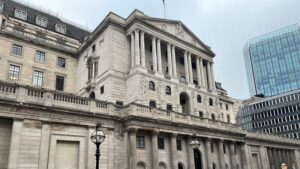To get a handle on what’s ‘normal’ and whether policymakers will reach it in 2012, we’ve updated our ‘policy-looseness’ analysis to gauge how G5 countries’ overall positions will change relative to their economy’s recovery rates.
We map the total policy stimulus, monetary and fiscal, versus the amount of excess capacity or slack as proxied by the OECD’s output gap estimates.
Output gaps are used to show how far a country’s GDP growth lags its potential, after which demand-inflation builds. The Fed uses them in the Taylor Rule when setting rates, which currently pitches the Fed’s target funds rate at less than zero – but, it takes no account of the fiscal side, which, as Standard & Poor’s attests, looks loose.
So, to fill this gap, stimulus in our rule is measured by how far from their long-run averages the combined monetary and fiscal positions lie. On this basis, our analysis offers the following observations.
Behind the curve?
After being at its loosest in 2009, the US policy stance should tighten further in 2012 as the Fed starts raising rates, core inflation averages just 1.6% year-on-year (the Fed’s own projection), and Congressional agreement allows at least some deficit improvement. But, given a more meaningful fiscal tightening is unlikely before the 2012 elections, overall policy should in the absence of an even more aggressive Fed fall short of what’s warranted by the recovery (narrower output gap).
Second, Japan should go the other way. After years of excessively tight real rates as deflation deepened, policy should ease in 2012 on the basis of some reconstruction-linked inflation at a stable Bank of Japan rate. The deficit will understandably widen and, if we’re right to expect a slimmer output gap, policy may look excessively loose, which may finally weaken the yen.
The eurozone, by contrast, should accelerate its policy tightening from both sides. On the monetary side, Trichet and, from October, his successor should continue raising rates, tightening real rates as CPI inflation falls back below 2%, while further austerity measures in Greece, Ireland, Spain et al help bring the zone’s underlying fiscal deficit down to 3% of GDP.
UK – first small step
Then there’s the UK. Here too we expect a further net tightening for 2012. Most of this is via the fiscal route as Osborne’s pre-announced tax and spending measures take the structural deficit down to the OBR’s 3.7%-of -GDP target from 5.3% in 2011. But, also, from less expansionary real rates – if we’re right to expect a 25bp rate hike this November followed by a total 75bp+ in 2012 – as CPI inflation falls back.
Like the eurozone, the twin effect could take the UK’s position past the others’ and beyond neutrality, despite the UK’s wider output gap. But, this would be just a first small step to correcting what in the past decade has been an unmatched net policy loosening by the UK.
Critics of output gaps accuse them of overstating the amount of slack, such that if policymakers continue monitoring them at current estimates, policy might be even looser than our analysis suggests.
But, either way, with real rates back at, or approaching, positive levels next year, economies recovering, deficits wide and sovereign risk rising, yields should head up.
And, especially if – as our analysis suggests – the US starts falling behind the curve.







